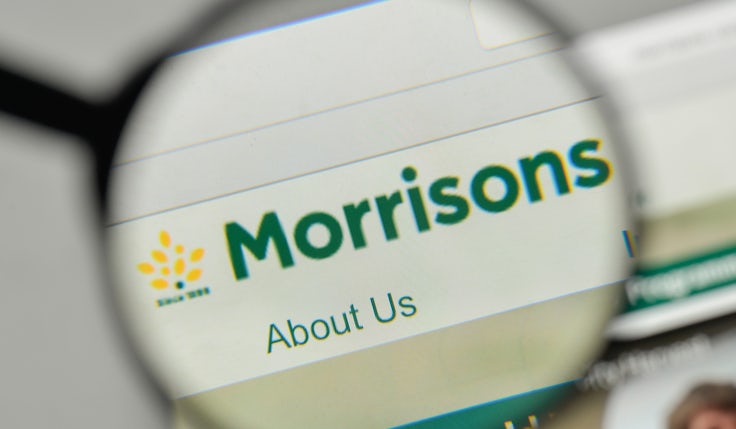Boutiques v Network
Marketers appear to be as torn as a teenager in love when it comes to choosing between using a boutique agency or a global network – their hearts tell them to go with the creative ideas that spring from the fresh minds of an independent agency, but their heads tell them that large networks can give them the scale and cost efficiency that the boutiques simply can’t.
- To read the cover story relating to this ‘Remodelling the agency relationship for the 3.0 age’ click here
- Check out what marketers are saying about the agency of the future click here

While cost and scale might rule a marketer’s head, there is still the romantic notion that boutiques offer one-off quirky creative ideas and dedicated service, much like an independent store being favoured over a generic multinational chain. But both boutique and network agencies are fighting to find ways to gain a competitive edge.
Some smaller agencies have crowned themselves king of a specific market. Agencies like Dubit and Kids Industries are focused entirely on the youth sector, while research agency 2CV has recently opened its “Bloke” division to deliver insights around the 30- to 50-year-old male demographic.
Meanwhile, other agencies are offering alternative remuneration models. The Help Agency, a not-for-profit agency set up this year to work with the third sector, donates half of its net yearly profit to its clients, relative to the amount of work it produces for them.
Co-founders Dean Hodgetts, Andy Wakefield and Hugh Dennis, once a Unilever marketer but now best known as the disgruntled dad in TV show Outnumbered, believe the agency is offering a remuneration model that will motivate both parties to work effectively with each other.
This is not a publicity gimmick, Hodgetts insists: “It gives us a day-to day incentive to find efficiencies, and is a very effective way of measuring our success.”
Hodgetts claims that the larger traditional agencies tend to concentrate on “high profile, shock-tactic campaigns for big charities just to get noticed,” while Help is set up to help the lesser known charities that these agencies aren’t interested in dedicating resources to.
The agency is hoping to raise the profile of its first charity client appointment, Women and Children First, which works in Asia and Africa to help prevent pregnancy-related deaths.
Dennis says: “Some smaller charities have never looked at themselves as a brand. They need help to engage and build relationships beyond donations, and they need help to develop new marketing strategies and revenue channels, beyond ‘chuggers’ (street fundraisers), because they ruin the brand.”
While Help is set up to work with clients that it believes are overlooked by the bigger agencies, others are setting up agencies with alternative models because they believe the traditional model is broken.
New models
Guided Collective founder Sam Reid, formerly a consultant to a number of large agencies including Mother and BBH, believes new models are emerging because the traditional agency model is outdated and irrelevant. He argues: “The traditional agency model has so many superfluous layers which were relevant to the time when there were three types of media. Now you have about 20 types of media and that structure has to change. Removing those silos is critical to ensure things are properly integrated.”
Some smaller charities have never looked at themselves as a brand. They need help to engage and build relationships beyond donations
Hugh Dennis, The Help Agency
Reid has developed an alternative “collaborative model” that he claims is more effective and can reduce client costs. Guided Collective runs an in-house core strategy team with a strong digital focus, alongside a “cloud” of about 200 independent consultants who are called in, and paid, on a project basis. Cloud members come from a range of disciplines such as creative, music, design, fashion, copywriting and PR, and work on other projects outside Guided Collective but sign a non-disclosure agreement once they agree to take on a client brief.
Guided Collective’s model means clients won’t have the experience of agencies selling them extra services they don’t require, claims Reid, something that some marketers in GyroHSR’s research have experienced.
Relationships
Reid disputes the notion that Guided Collective’s model doesn’t bode well for developing deep client-agency relationships. “Inevitably we are going to polarise people,” he says, but he believes the model enables a more straightforward and honest relationship with clients. And as client management is run in-house, the experience would not differ from working with a traditional agency, he adds.
The collaborative model is also favoured by The Next Door agency, which operates within a “neighbourhood” of five other agencies that all offer varying, complementary services, and can come together to serve clients. The neighbourhood’s areas of expertise span social media, technology, advertising production, PR, film content and music partnerships.
Not only does this allow The Next Door to deliver global campaigns, the agency claims its payment structure of one profit and loss account, regardless of how many neighbourhood agencies have completed the work, is the way forward for clients and is indeed how agencies should be working.
The directors of The Next Door have all come from big network agencies, which chief executive Kieron Monahan believes put “barriers in the way of doing the best work”.
He adds: “We were getting frustrated with coming up with ideas then dealing with other agencies that were on separate profit-and-loss accounts. Their businesses would thrive the more they were able to execute within their own discipline. Rather than everyone just getting behind the idea, agencies were trying to get a larger share of a client’s budget by directing the idea into their own discipline.”
The neighbourhood works, Monahan says, because of the selective and complementary nature of the agencies involved. For example, the neighbourhood doesn’t include another creative and planning arm, because that is The Next Door’s specialty. And like Guided Collective, each partner is called in if their skillset best matches the client’s needs, meaning client fees don’t factor in staff salaries across multiple departments.
“The structure of an agency is important in pushing a client’s brand forward. If everyone is under a single P&L then everyone has the same objective and is working towards the same agenda. And the client gets to see the best creative ideas,” Monahan adds. The model of a single-agency P&L is the future, Monahan believes.
But global network agencies aren’t just sitting back and waiting for boutiques to develop new strategies to take business away from them. Larger agencies are setting up divisions aimed at targeted demographics, such as WPP’s Ogilvy Mather’s Ogilvy Noor division, which specialises in Islamic branding and marketing.
Network Interpublic Group claims that new technology is helping it to become more “boutique”. McCann Worldgroup, which is part of this network, has developed an online “neutral network” that offers in-depth profiling of the talents and skills of each of its 20,000 global staff members – its individual agencies such as Futurebrand and the communities within this network. This technology helps McCann match client briefs to the relevant talent within its global network, Brett Gosper, EMEA president for McCann Worldgroup claims.
New technology has enabled network agencies to source their own “boutiqueness” but to a large scale, he argues. “We have never been able to do such detailed profiling before, and now that we can, it gives us a huge advantage over boutique agencies. The diversity we can get across the globe means we have far greater opportunities to find interesting and diverse ideas.”
Whichever model emerges as superior, it offers marketers a win-win solution if both boutique and network agencies are striving to deliver better work more efficiently. The choice may well come down to the merits of each agency, and not dictated by size and price.



